If you like to spend a lot of time in nature, the place on our country area is not only for vegetable and fruit crops, but also for flowers - tulips, zinniy, peonies, phlox, but you wish to add your bright landscape by any original plant, you can Buy Eremurus.
General About Flower Eremurus
This plant belongs to the family of xanutorrey, more specifically - to the subsample of asphodel. The name "Eremurus" occurred from two Greek words, which can be translated as the "desert" and "tail". In desert places (at home), these high bloomons were noticeable.
Peoples living in Central Asia, are referred to as a perennial plant widecare or shry that the Tajiks and Kazakhs mean "glue." This is due to the fact that from the roots of the plant thanks to Polysaccharide, Eramuraun may be able to get glue, as well as the plaster. But the British names are very expressive - "Candle of the Desert", "Lily Livy Tail", "Royal Spear". At the Poles, he is the "deserter", at the Dutch - Cleopatra Candle. For the first time, Eremurus described Peter Pallas (this is a Russian naturalist, traveler, geographer). And it happened in 1773. From the root rosette represented by numerous three-rod-linear leaves, cylinding from the bottom (their length is from 30 to 100 centimeters), it comes out a long leafless stem that is capable of reaching a two-meter height. It is gradually revealed by a long inflorescence - a brush consisting of white, pink (different intensity), yellow, brown, dust-red, orange, burgundy or salmon flowers having a bell tower (or invigorate) shape. They are located on a spiral flowers, open first at the bottom of the infloresception, gradually rising up. The flowering of one fluffy brush lasts from 10 to 40 days, and the flowers in it can be from 30 to 1000. Ereurus fruits are almost spherical, three-dimensional smooth or wrinkled webbed boxes dropped when ripening. Seeds in Eremurus have three sharp faces and a transparent "wing." The color they are black. The roots of the plants are similar to the sea star, octopus or large spider. The diameter of the Cornledonian can reach 10 (or more) centimeters, twisted roots, fleshy, have thickening - cylindrical or spindle-shaped. In his homeland, Eremurus grows in conditions for which the temperature differences and changes in the amount of precipitation are characterized during the year. In the summer there is hot and little moisture, but in the winter is cool and pretty wet. In the spring of Eremurus, it is advisable to give more water, then he will quickly go into growth. In the fall, if it is often rained, then Eremurus is able to grow many roots, which will later affect its appearance after wintering.
The most famous species (now there are about 60 them):
- Olga - the plant reaches the height of one and a half meters, the length of the conical (or cylindrical) brush is about 60 centimeters, the painting of flowers pink, there is a dark-red veil and a yellow spot at the base. Sometimes the painting of pericircuts is white with the presence of greenish veins.
- Altai - its height ranging from 90 to 150 centimeters, in May-June, pale yellow flowers are revealed on the brush.
- Alberta is its "height" from 90 to 120 centimeters, coloring flowers can be compared with the color of freshly sliced \u200b\u200bbeef pulp, flowers are revealed in April.
- Shortity - height from 60 to 200 centimeters, coloring of wide-rolled flowers Brourow-pink. Blossom begins in April, ends by mid-May.
- Cheating - its height from 60 to 120 centimeters. The first flowers begin to reveal in April, their painting is lemon-yellow.
- Powerful - grows up to three meters, while the length of the spo is from 60 to 120 centimeters. In June, shows its white or pinkish flowers.
- EXHONE - height from 120 to 250 centimeters. The first bright pink flowers are revealed in April.
- A narrow - height of about 170 centimeters, the first flowers open at the end of June, the last - in August. Their painting is yellow.
- Tianzhansky - height from 150 to 180 centimeters, Late Cutting (July-August), Pale pink flowers painting, flowercourse.
Excellent hybrids received breeders, crossing two types - Eremurus Bunge and Olga. This is a group of herfold and heydown.
In Russian gardens, you can meet other attractive hybrids, such as a steering wheel. They were obtained by crossing Eremeruus Isabellovoy. Most popular varieties:
- "Pinocchio" (in sulfur-yellow flowers bright cherry-red stamens);
- "Cleopatra" (with orange-brown flowers);
- "Obelisk" (in white flowers Emerald Middle);
- "Romance (painting of pink-salmon flowers);
- "Roford" (salmon shades in flowers are dominated).
What place to choose to land Eremurus?
Most Eremurus prefer open clearing, who are well warmed by the sun in the day. There are types of eremurusov who make a shadow, but there are few of them, for example, eremurus powerful milky-flower or elon. These plants are not demanding to moisture, so they feel well on dry areas. In nature, these plants adapted to different soils. For example, in Kazakhstani deserts, they live on heavy soils, where clay prevails. It happens that these soils are so hard as they look like stones. In Turkmenistan, Eremurus calmly lives in the sands and vegans. But the practice indicates that the best of all the eremurus shows themselves on the rocky-crubbed soils, because they do not wear out of water. The root system of this plant is increasing well-developed roots, so important nutrients can accumulate over long years. As a result - even with a lack of moisture, this plant successfully increases the above-ground mass. Of course, a faster plant growth occurs on fertile soils. The reaction of the soil medium is desirable slightly or neutral.
How to plant an eremurus and outdoor care?
First of all, you need to buy the dried cornedonians. It is possible to find them in flower water, honored by these plants, or in those flower shops that supply from Poland, Germany, Holland. Pay attention to the upper surface to be at least one kidney, and better than several. Scales folding these kidneys must be laid tight and look fresh. The roots, departing from the Donets, must be solid, intact. If the roots are broken, then such plants may die. Dry "stars" can be put into the solution of manganese for a couple of hours (add several crystallini to the liquid of the grip). But the kidneys in this procedure should not be immersed in solution. Groans or flower beds for these colors do high, do not forget about the drainage layer (it can be small gravel, pebbles). If there is an opportunity, then prepare such a soil for Eremeruses: two thirds of the turf and one third of the compost with a soil from the greenhouse. Even in this mixture, pour and mix the coarse sand or small pebbles. You can safely plant Eremeruses in clay soils, but they will break them down and add sand, crushed stone and slightly compost.
Landing is advisable to spend in one of the days of September. Often, the seating material can be found in the store only in the spring, then the landing must be held at the moment when young leaflets are unfolding on birch.
Under each Cornledonse, make a spacious well, the depth of which is 20 centimeters. Place in it Cornledonce, carefully placing fragile roots on the sides. Between plants, leave from 30 to 40 centimeters. If there are several rows, then between them should be 60 centimeters.
In abundant irrigation, Eremeruses need spring and bloom. In situations where the humidity is high, these plants are enough of the moisture that goes into the soil during the rains.
Periodically loose land and pull the weeds. Do it better after rain or watering.
If you want to collect seeds from your plants, then it should be remembered that only those that were at the bottom of a long infloresception are matured. Therefore, after a burg from a brush cut by a third, then in vain the nutrients will not be consumed.
There is a feature in care for eremurus. After they bloated when they are yellowing and dry leaves, it is desirable to dig out of the earth, it is desirable to dig out of the ground, to dry a little and three weeks to store indoors with good ventilation, laying up in the drawers with dry sand. This is due to the fact that in the period of summer peace, these plants do not need a lot of moisture, and in August or in the first days of September, the abundance of precipitation usually falls. If there is no possibility to dig up the eremuruses, then you need to make a kind of shelter over plants at this time, preventing water in the soil.
With the arrival of spring, adopt my landings with mineral complexes - "Kemira-Flower", "Kemira-Lux", "Kemira-Universal" are suitable (40 grams are taken to the square meter) and overworked by dung or a compost (about 5 kilograms go to the square meter). Too many fertilizers (especially nitrogen) can not be made, otherwise the plants will actively increase the leaves, but they will not give colors. If there is a lot of manure, nitrogen in the soil, then resistance to diseases and winter conditions are reduced.
Another feeding can be made at the end of the autumn, taking on a square meter of 35 grams of superphosphate.
Even if there is no snow in winter, and the temperature drops to minus 20 degrees, the eremuruses successfully winter. Therefore, they can not be covered. If you still want to progress, very much valid with your colors, then cover the planting straw or spruce "paws." The thermal-loving species (Albert, Olga, Bukhara, Yellow, Indersky) are protected by a decade -antimete layer of peat.
Eremurus: Features of growing seeds
In the soil seeds need to be sent early in spring. After the appearance of shoots, they will need to be seeded, observing the distance between them in 30 (or more) centimeters. You can sue seeds with a seedy way. In this case, the seeds in the seedlings (containers, a pot, the depth of which are not less than 12 centimeters) it is necessary to send in September or October. The depth of the seal ranges from 10 to 15 millimeters. The temperature at which germination occurs is 15 degrees. Immediately warned that in the spring, not all shoots will seem. It happens that the period of germination of individual seeds of Ereurus is delayed for two years. Watering seedlings should be carried out often. When leaflets are shaking, it is necessary to transfer the plants into the dark place, let them rest. In September or October, each seedman will transfer to your pot and rendered to the garden. When the weather forecasters warn about the coming frosts, the pots should be thoroughly covered by using dry leaves and huskies. It will be necessary to remove this layer in the spring when stable warm weather will be installed. So the young seedlings are growing for three years, then they can already be planted in a flower garden and care for adults. At the same time, they resort to the method of transshipment of the earth coma from the pot. The flowering of such plants can be seen in 4-7 years from the moment when shoots were crossed.
As Eremurus breeds
Not only the seeds multiply these plants, but also vegetatively. It happens that in the spring, one (or even several) new small sockets, grew up from subsidiaries, appears near the main sheet socket. These "kids" can be separated from adult plants in September. The fault places are powder, leave for drying, and then placed in other places of the site. Separate the "kids" should be on the light of Nazim. If the branches do not occur, then leave them about adult plants for another year, let the process of their formation continues.
If you want to get more eremuras in a short time, then when boarding Cornledonce, divide, having crashed a bit from the bottom side so that with each such part had its own roots. Slices Also sat down ashes. Next year, each such part grows its kidney. Then you can easily divide these parts with roots on the available cuts.
Usually adult eremurus are divided after 5 years.
How to protect Eremeruses from pests and diseases?
If the eremuruses piliate colonies, thrips or bugs, then they are treated with special insecticides, for example, "Aktar", "AcTellik", "Fufanon".
The slugs are usually collected by hand or in the evening near the landings put bait - tanks with dark beer. In the morning, the slugs in them eliminate.
Owls under the ground mouse and moles can harm the roots, as a result of which they reveal. If you see that some eremurus look husiens, oppressed, poorly increasing the above-ground part, then try to spread the roots, inspect them and remove those parts from them that they were subjected to rotting. Slices Swipe ashes, leave on drying. Then the root system will jump again. You can decompose special baits with poison on the territory of the site.
Diseases that may appear on plants:
- chlorosis;
- viral infections;
- rust and other fungal lesions.
In chlorosis, such symptoms appear: pale or yellowing sheet plates. This happens with incorrect leaving of plants. Therefore, it is necessary to change the conditions for their content.
Rust indicates the brown days or almost black dots, strokes that quickly grow up and spread above. In order for the disease does not spoil the entire plant, it is necessary to carry out a fungicide processing, for example, "phytoosporin", "near", "quadris", "topaz", "barrier".
Sometimes on the leaves appear tubercles or pale yellow colors. This happens when the plants are damaged by viruses. We will have to destroy these specimens so that the viruses do not move to growing next door until viral diseases be treated. By the way, pest insect viruses feed on plant juice.
Often, dachables are wondering - why are the flowers from their favorite eremuruses look ugly? This result is obtained if the spring frost damaged the growth point. To avoid similar troubles, it is necessary in the spring, if there is a freezing warning, do not forget to cover not only vegetable cultures, but also Eremeurs, using sponbond or Loutrasil.
Knowing features and necessary conditions for the successful development of eremurus, you can grow by majestic plants on your site. They are suitable for alpine slides, lawns, flower beds. They are well neighboring with ripples, daffodils, iris, tulips, malva, spirits, poppies, cereals.

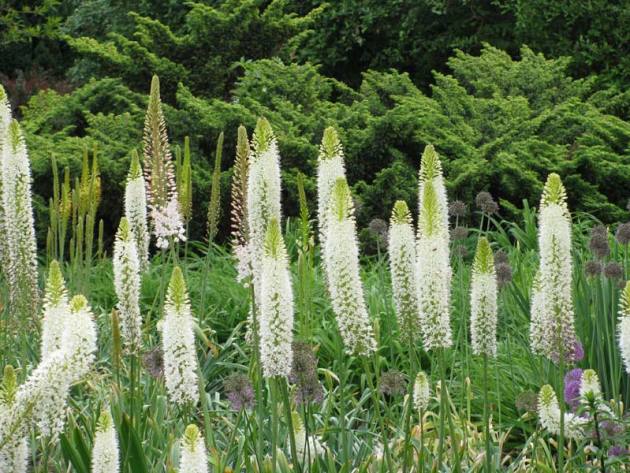
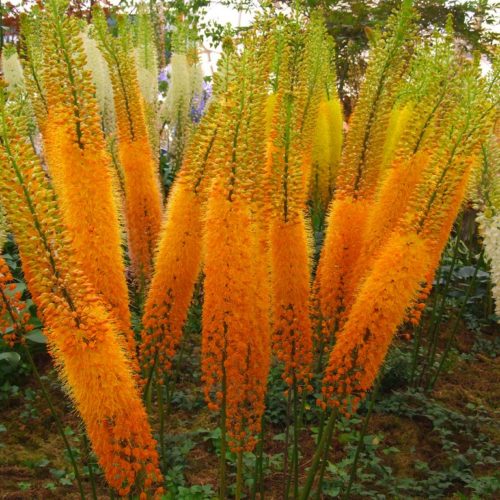
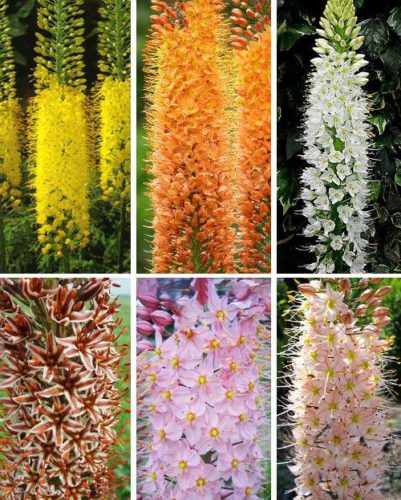

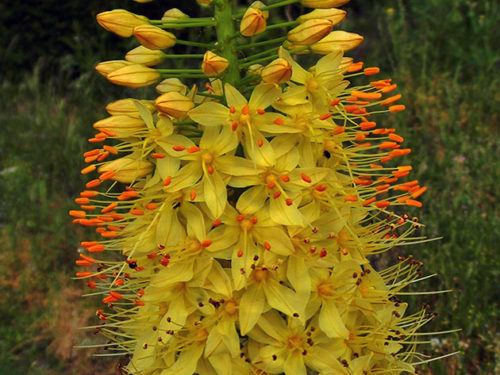
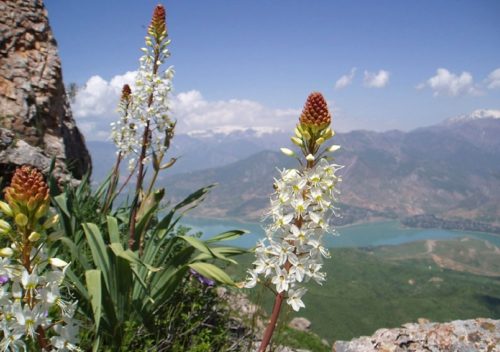
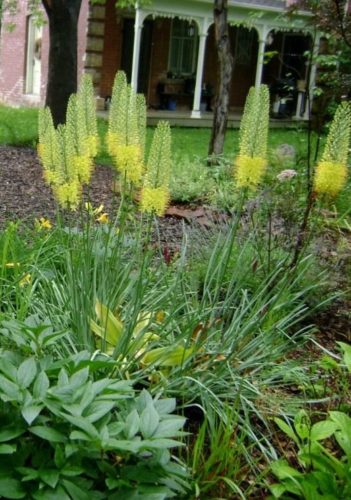
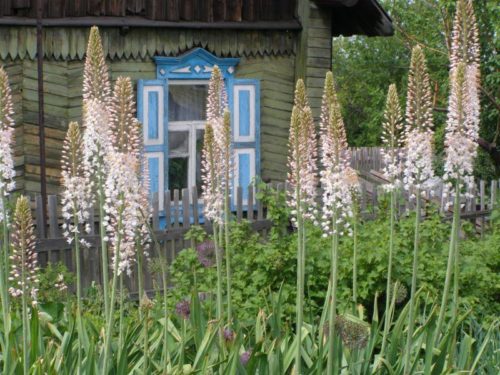
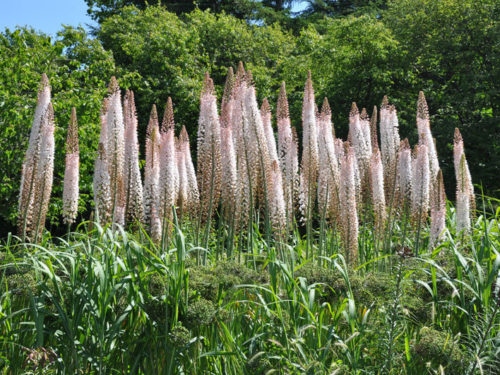
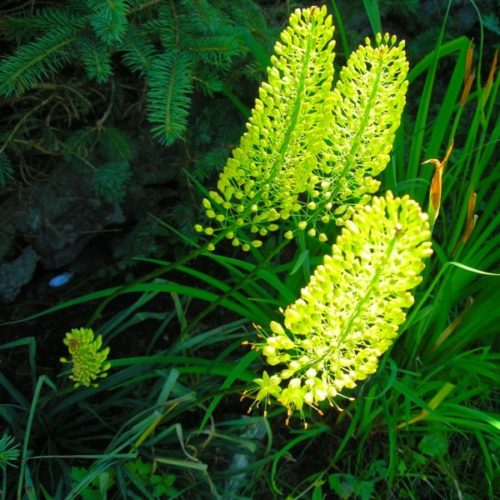

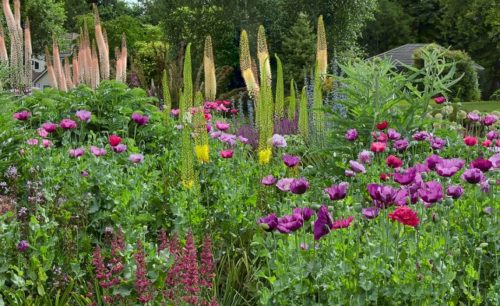
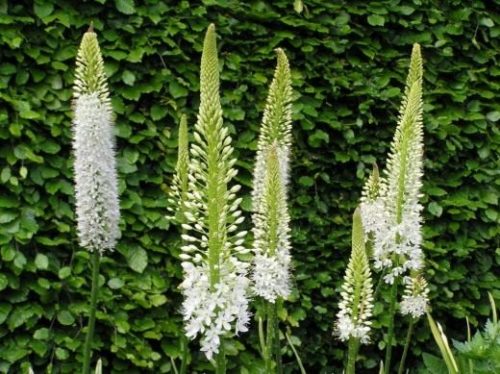












 Start a discussion ...
Start a discussion ...